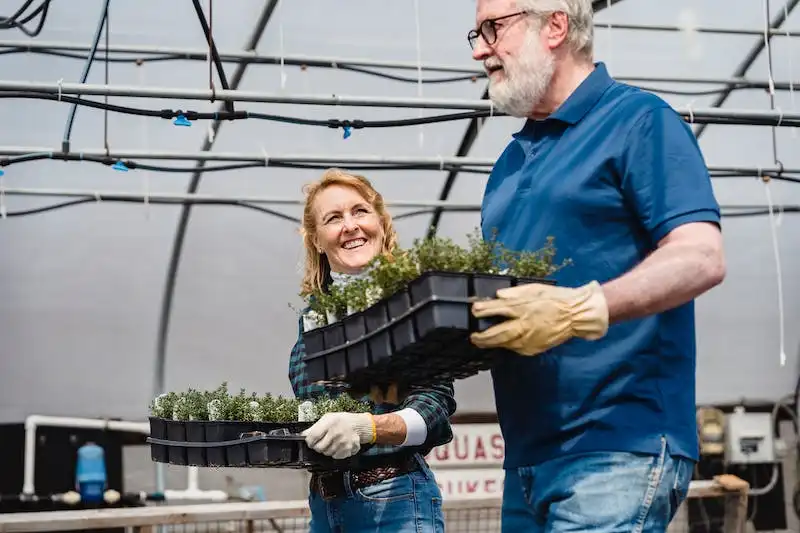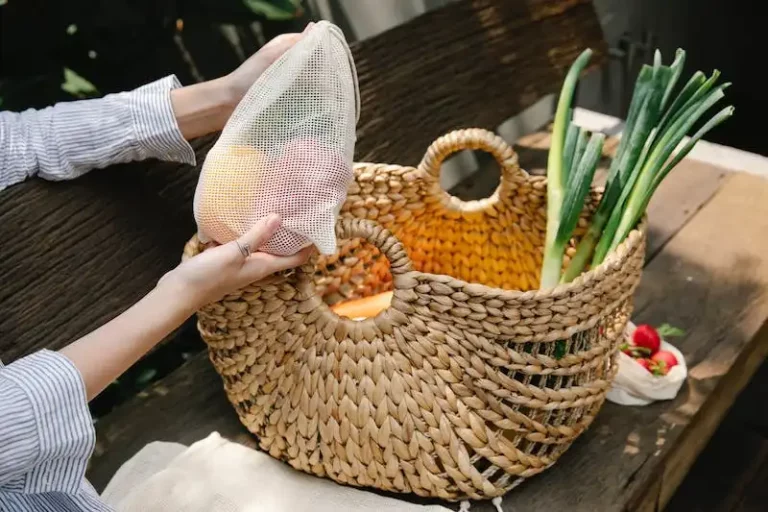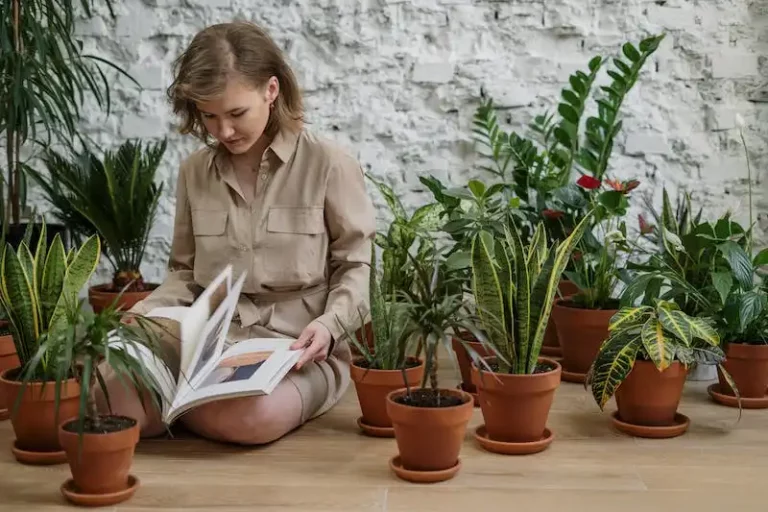Staking is a key point in growing full and beautiful flowers. Many plant varieties, such as peonies and dahlias, have tall stalks and stems that need support to stay upright. Without proper staking, these flowers will flop over and their blooms might hide in the foliage.
Staking flowers is an easy and essential process. It involves using stakes made of bamboo or jute to support the plants. The stakes are placed on the outside of each flower and tied to the stem. This will provide the necessary support for the flowers.
Staking can be done at any time, but it is best to start early in the growing season before the plants get too tall. You can use a group of stakes or create a staking system using extension string. This will ensure that the plants have enough support to withstand heavy winds and stay upright.
Staking is especially important for tall flowers, such as dahlias, which sometimes reach heights of several feet. These flowers have heavy blooms that can easily become damaged if not supported properly. Staking also helps to keep the flowers off the ground, preventing them from getting wet and potentially getting diseases.
Overall, staking is a simple and effective method to maintain the beauty of your flowers. It helps to keep them upright, prevents damage from wind and rain, and allows the blooms to be displayed to their full potential. Investing the time to stake your flowers will result in healthier, taller, and more vibrant plants.
In conclusion, staking is an important part of flower maintenance. It ensures that your flowers stay strong, lean, and green throughout the growing season. So don’t forget to stake your flowers and enjoy their beautiful blooms for longer!
Stake tall flowers the easy way
Staking tall flowers can be a challenge, especially when their foliage is heavy and floppy. In this article, we will discuss a simple and easy way to stake your dahlias, zinnias, peonies, and other tall perennials to keep them supported throughout the growing season.
One method that-cures the problem of bowing stalks is to use stakes and string. This system works well for plants that stay in one place, such as dahlias and peonies. Simply place the stakes around the plant, forming a circle or group, and then tie jute or green string around the stakes at different heights. As the plants grow, their stems can be gently tied to the string for support.
If you have a large group of tall flowers, it may be easier to use an extension system, such as a bamboo or metal cage. These structures provide full support to the plants, even in windy conditions. There are many pre-made cages available, or you can make your own using bamboo stakes and jute string.
Another option for staking tall flowers is to use a hidden support system. This is especially useful for flowers that tend to lean or fall over, such as zinnias. You can stake the flowers from outside the plant using bamboo stakes and string, then strategically place foliage or other plants to hide the stakes.
Before staking your tall flowers, it’s important to research their specific needs. Some plants, like dahlias, may require extra support at certain times in their growth cycle, while others, like zinnias, may need continuous support until they reach full bloom. By understanding how your flowers grow and what support they need, you can ensure they stay upright and healthy throughout the season.
Staking tall flowers doesn’t have to be a chore. With a little bit of planning and the right materials, you can easily support your plants and enjoy their beautiful blooms all season long.
| K-State Research and Extension | MSU Extension |
| For more information on staking flowers, visit the K-State Research and Extension website. | To learn how to stake your flowers effectively, check out the MSU Extension publication on staking tall plants. |
Staking Flowers
Staking flowers is an important part of maintaining their growth and appearance. Many tall plants, such as zinnias and dahlias, have a tendency to lean or fall over as they grow and produce heavy blooms. By staking these plants, you can provide them with the support they need to stay upright and show off their beautiful flowers.
There are several different ways to stake flowers, depending on the plant and its specific needs. One common method is to use stakes or bamboo poles placed outside the plant’s base. This allows the plant to grow through the stakes or poles and provides a way to tie them up as they get taller.
Some plants, like peonies, can be staked before they even start to bloom. This helps hide the stems and foliage, keeping the plant looking full and supported. Other plants may need to be staked after they have already started to grow. In this case, you may need to carefully insert a stake near the base of the plant and tie it up to provide support.
When staking flowers, it’s important to consider the height and weight of the plant. Tall plants will require taller stakes and may need additional support, such as caging or string, to keep them upright. Heavier blooms may also require stronger stakes to prevent them from bowing or falling over.
Staking flowers is a low-maintenance way to support your plants and ensure they look their best. It can also help prevent damage from wind or other adverse conditions. By taking the time to stake your flowers, you can enjoy their beauty and vibrant colors throughout the growing season.
Staking flowers is often done using materials such as jute, twine, or wire. These materials are flexible and can be easily tied around the stems of the plant to provide support. Some gardeners also use stakes with hoops or rings to create a more structured support system for their plants.
Research conducted by K-State Extension and MSU has shown that staking flowers can have a positive impact on their growth and overall health. Photos taken over time show that plants that have been properly staked have less floppy foliage and are more likely to bloom and stay upright until the end of the season.
Overall, staking flowers is a simple and effective way to support your plants and enhance their beauty. Whether you’re staking perennials, annuals, or other types of flowers, taking the time to provide them with the support they need will ensure they thrive in your garden.
MSU Extension
Staking flowers is a key element in helping your plants stay supported and looking their best. Without proper staking, tall and floppy plants may lean or bow under the weight of their flowers and foliage. This can result in the stems breaking or the flowers getting damaged.
One way to stake flowers is by using stakes made of bamboo or other sturdy materials. These stakes can provide support to individual plants or a whole group of plants that are growing close together. To stake a plant, simply insert the stake into the ground next to the plant and tie the stem using jute or string. This will help the plant stay upright and prevent the stems from falling over.
Another option is to use a caging system. This involves placing a cage made of metal or wire around the plant to provide support from all sides. This method is particularly useful for tall plants with heavy flowers, such as dahlias and peonies. The cage helps to keep the plant upright and prevents it from bending or breaking under the weight of the flowers.
Staking should be done at the right time. It is best to stake the plants early in the season, before they reach their full height. This gives the plants time to grow and lean on the stakes for support. Staking after the plants have already grown tall can be more difficult and may require additional measures to keep the plants from falling over.
Research conducted by MSU Extension has shown that staking is an effective way to prevent floppy plants. Staked plants have been found to have better air circulation, which reduces the chances of diseases and promotes healthier growth. Staking also allows more light to reach the lower parts of the plant, ensuring that all the flowers receive adequate sunlight.
Staking flowers is relatively easy and requires minimal maintenance. Once the stakes or cages are in place, they can be left there for the duration of the growing season. However, it is important to regularly check the ties and adjust them if needed, as the plants may grow and change their shape over time.
In conclusion, staking is a simple and efficient support system for plants, such as zinnias, that tend to grow tall and floppy. It helps to keep the plants upright, prevents them from falling over or getting damaged, and improves their overall appearance. By following the proper staking techniques, you can ensure that your flowers stay looking their best throughout the season.
Bowing out
When a plant reaches a certain height, it sometimes needs some support to prevent it from leaning or falling over. This is especially true for tall and heavy plants like peonies, dahlias, and bamboo.
Staking is a common method used to provide support to these plants. Stakes can be made of materials such as bamboo or metal, and they are usually placed in the ground near the plant. The plant’s stems or stalks can then be tied to the stakes using jute or string.
Another option is to use a caging system. The cage can be made of metal or wire, and it is placed around the plant to provide support. This helps to hide the stakes and gives the plant a more aesthetically pleasing appearance.
Some plants, such as zinnias, have floppy stems that need support until they reach their full height. In this case, an extension on the stake or cage can be used to provide the necessary support.
Staking is relatively easy to do, but it does require some maintenance. As the plant grows, you may need to adjust the ties or add additional stakes or cages. It is important to regularly check the plant and make any necessary adjustments to ensure it stays supported.
Research from MSU and K-State has found that staking can also have benefits for the plant. By providing support, staking can help prevent damage from wind or heavy rain. It can also improve air circulation and reduce the risk of disease. Staking can even promote better bloom by keeping the plant upright and allowing sunlight to reach all parts of the plant.
So, if you have tall or heavy plants in your garden, consider staking them to ensure they stay upright and healthy. It’s a simple and effective way to support your plants and enjoy beautiful flowers all season long.
Lean on me
When it comes to staking flowers, there are various methods and materials you can use to ensure their proper growth and support. One common method is to stake the plants using bamboo stakes or other sturdy materials, such as metal or plastic rods. This helps to prevent the tall flowers from falling over or bending under their own weight.
Staking is especially important for plants with long stalks and heavy blooms, like dahlias and peonies. These flowers can grow quite tall and may need extra support to stay upright. By staking them, you can help guide their growth and prevent any damage caused by wind or other external conditions.
The process of staking begins after you plant your flowers. As the plant grows, you will notice that the stalks start to get longer and the foliage becomes thicker. At this point, it is a good idea to stake the flowers to provide support. This can be done by placing the stakes in the ground around the plant and tying the stems to them using jute string or other similar materials.
Staking not only helps to support the flowers, but it can also hide the stakes and create a more aesthetically pleasing appearance in your garden. By tying the stems to the stakes, you can help train the plants to grow in a more upright and organized manner.
Some plants, such as zinnias and other perennials, may not require staking because they have a strong root system that keeps them supported. However, other plants with floppy stems or heavy blooms may benefit from staking. Research from MSU Extension and K-State Research and Extension recommends staking flowers like gladioli and dahlias.
Staking flowers is an easy way to provide the necessary support and maintain the desired height and structure of your plants. It also helps to prevent them from falling over or breaking, especially during times of heavy rain or wind. So, don’t hesitate to lean on a stake for support when your flowers need it!
Whether you’re a beginner or an experienced gardener, staking flowers can be an important part of your plant care routine. With the right techniques and materials, you can ensure that your flowers stand tall and proud, bringing beauty to your garden all season long.




